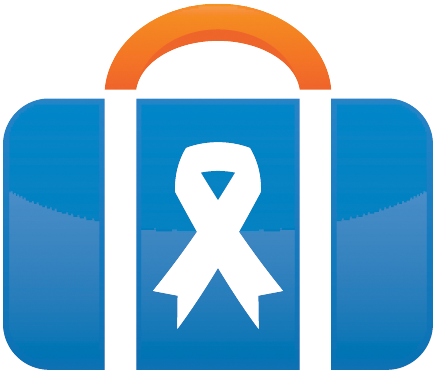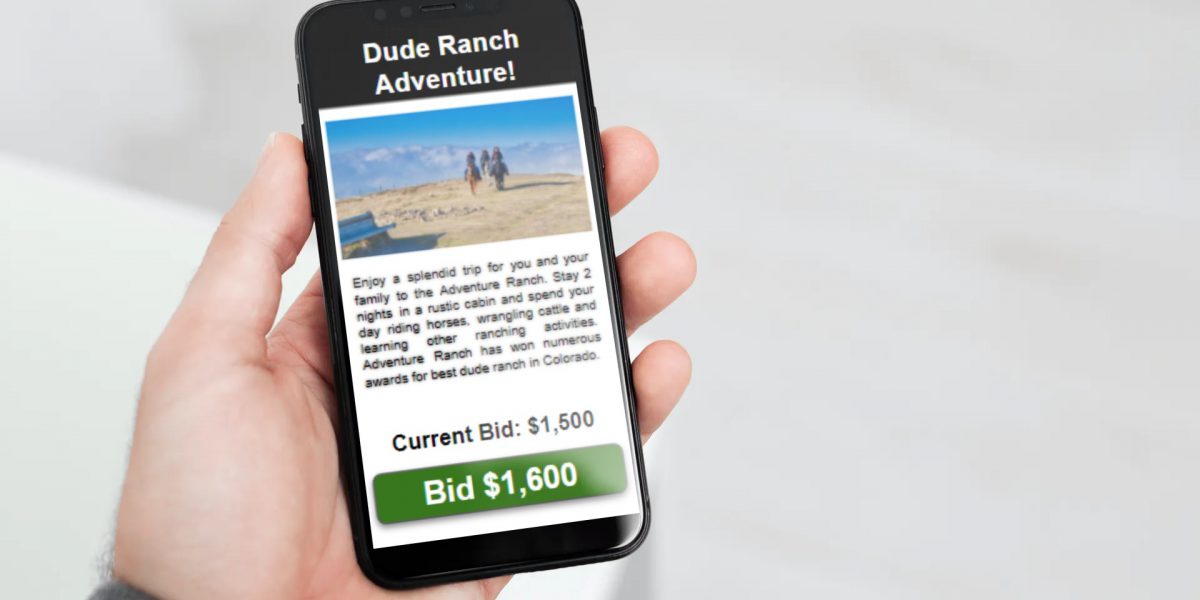Earlier this year, society came to a halt as COVID-19 spread to all corners of the globe. For nonprofits, this meant finding digital alternatives to their donor engagement activities in order to keep their doors open during this uncertain time.
Even though the pandemic has turned society upside down, nonprofit fundraising doesn’t stop for anything. Thanks to the online landscape, organizations have managed the transition and have been able to continue securing the necessary funds using high-level tools despite the circumstances. Of all the opportunities available at your disposal, one of the absolute best options is to host an online auction.
Nonprofits have relied on auctions for quite some time — and for good reason! When sufficiently planned, they can be highly profitable events that can deepen donor engagement. Backed by nonprofit auction software, you can take these events to the virtual space without hassle. That way, you can continue fundraising while your donors stay healthy and support your cause from afar. Everyone wins!
Whether you’re thinking of shifting your auction to the digital space for the first time or you’re simply looking for a refresher, we’ll walk through the steps for hosting a successful nonprofit auction online. In no time, you’ll create a virtual fundraising event that’s sure to capture the attention it deserves. Without further ado, let’s jump in!
Step 1) Recruit a team and work out the logistics
First and foremost, you’ll need to coordinate a fundraising team to pave the way for your auction. Hosting an auction involves several moving pieces, and the entire process can’t fall onto one or two individuals. Each member of your auction team should bring useful skills to the table, from marketing to event planning.
In any case, it’s important to note that the makeup of your team will depend on the size of your online auction. You’ll need enough hands to ensure all your bases are covered.
From here, you’ll need to work out the event’s logistics. Prior to moving forward, some questions your fundraising team will need to consider include:
- Will your online auction be part of another fundraising event?
- When will you hold your auction, and how long will bidding remain open?
- What is your budget, and what existing resources can you utilize?
- Do you intend to line up sponsorships to assist with upfront costs?
- What are your overall revenue goals for the auction?
Before you can begin setting up your auction, walking through these questions ahead of time is essential. Once you can move forward with confidence, it’s time to start procuring items for your online auction.
Step 2) Procure the right items
One of the most important — and most complicated — parts of planning an online auction is the item procurement process. The items you choose are the staple of your online auction. They’ll be used across event promotion and can ultimately determine whether prospects will register, attend, and bid.
In short, the items you procure have a direct impact on your event’s ROI, making an effective procurement strategy vital to your success.
Overall, you’ll want to look for items that are relevant to your supporters, so your donor database will prove immensely valuable during this stage. By consulting donors’ past giving and engagement data, you’ll gain information regarding:
- Their interests. The auction items that tend to do the best are those that appeal to bidders’ interests. Take a look at your current donors’ hobbies and interests and select items accordingly.
- Their income. By taking a look at their employment data paired with past donations, you can gauge what your average donor may be willing to spend at an auction. This will help you select items that fit their budgets.
After analyzing your data, you’ll want to have your fundraising committee work together to brainstorm ideas that suit your donors’ unique needs, which may include offering virtual experiences under the current circumstances. As you begin procuring items, start internally by encouraging your procurement team to ask their personal connections to donate items to your auction.
From here, turn to local businesses to donate products or services. Chances are, they’ll agree thanks to a phenomenon known as corporate philanthropy. According to Double the Donation’s corporate social responsibility guide, corporate giving makes up roughly three-fourths of nonprofits’ total monetary contributions, making it a vital resource for events like this.
By relying on your community and leveraging existing data as cues for your item procurement, you can develop an auction catalog that catches prospects’ eyes and encourages them to register for your event.
Step 3) Set up your auction website
Once you’ve nailed down the logistics and started procuring items, it’s time to set up your auction website. In short, your auction website serves as an online catalog where attendees can safely browse and bid at their leisure.
Backed by intuitive nonprofit auction software, you’ll be able to seamlessly assign a name, category, item number, and description to each item within your auction catalog. As you begin doing so, keep these tips in mind:
- Present items in a compelling way. For each item, you’ll want to include compelling imagery and informative descriptions. Remember, your bidders can’t see or touch your auction items in person, so describing them in great detail is imperative to driving bids.
- Determine each item’s fair market value (FMV). For instance, a $100 gift certificate clearly has an FMV of $100, but not every item is this easy to evaluate. Start by searching what similar items typically sell for online. If you’re still unsure, you may need to get an expert opinion.
- Set fair starting prices. Attract bidders with a low (yet fair) starting price based on your FMV. Keep in mind that there’s no true formula for setting starting prices that works for every item, but keeping them relatively low will allow all bidders to participate.
Ultimately, your auction catalog plays a major role in the success of your auction. Improper starting bids and poor descriptions may result in NO bids. Plus, taking the time to develop a well-designed auction catalog will be instrumental in your event promotion.
Step 4) Execute your auction
When the day of your online auction arrives, it’s time for all your planning to pay off. Whereas in-person auctions require more time to set up, online auctions are much easier to execute. When backed by the right auction software, you’ll easily handle registration, manage auction items, and automatically assign bidder numbers.
As you kick off the event, you’ll need to take extra steps to engage your remote audience and maintain momentum throughout the event — especially in today’s crowded and competitive virtual space. To maximize engagement, we recommend the following tips:
- Leave bidding open for enough time. The great thing about online auctions is that you have more flexibility with your timeline. Remember, closing too early will cause you to leave money on the table. Instead, you’ll want to “keep the auction open throughout the week of the event to fully engage supporters,” according to this resource.
- Offer a mobile bidding app. Mobile users spend nearly 90% of their time on apps, making a mobile bidding app a great option. By bidding straight from their mobile devices, guests won’t have to stay glued to their computers throughout the event. Not only is this fun and convenient, but they’ll be able to instantly act when outbid thanks to real-time push notifications.
- Consider live streaming. Live streaming can help you connect with attendees and keep energy high throughout your auction. For instance, you may consider hosting a kickoff stream, periodic check-ins, a virtual gala, or a celebratory stream to thank your generous participants.
These are a handful of the steps you can take to drive engagement and pull off a highly successful online auction. Keep in mind that you know your audience best, so keep their interests in mind to create strategies that appeal to them.
Step 5) Complete the appropriate follow-up
Once your online auction wraps up, the work isn’t quite over yet! There are a few final steps you need to take before wrapping up. After the event, your team will need to take these immediate next steps:
- Thank your participants. Expressing appreciation will show bidders that you truly value their contributions. Keep in mind that you may be able to automate acknowledgments and tax receipts using your auction software. Further, you may want to send acknowledgement letters to anyone who donated an item.
- Arrange for delivery or shipping. With in-person auctions, it’s understood that winners will pick up their items after the event concludes. However, with online auctions, there may be questions surrounding how they’ll receive their items. For instance, you may choose to ship them. Alternatively, arrange for volunteers to safely deliver the items if participants are within a close geographic distance.
- Review performance. Using your auction software’s reporting features, you’ll want to analyze your event’s performance, according to Handbid’s nonprofit auction software guide. See how much money you raised, which items drew the most bids, and who your top bidders were. This will give you guidance when moving forward with planning your next online auction.
Once you’ve completed these follow-up steps, you’re ready to wrap up and celebrate your success. If you pulled your online auction off without a hitch, you’ll be starting the process all over again before you know it!
As a nonprofit professional, you’re likely in a position that you didn’t expect to be in this time last year. You’re probably struggling to develop a recession-proof fundraising strategy and keep morale up during this difficult time. Don’t let these seemingly insurmountable obstacles slow you down!
An online auction can empower you to continue fundraising and engaging donors at a safe social distance. From recruiting a highly-skilled fundraising team to proactively following up with bidders, equip your team with the knowledge and resources to pull off the best online auction possible.




